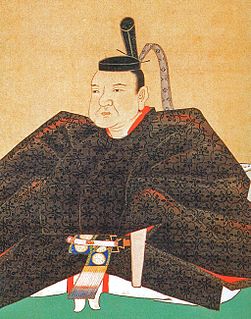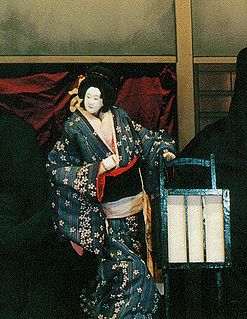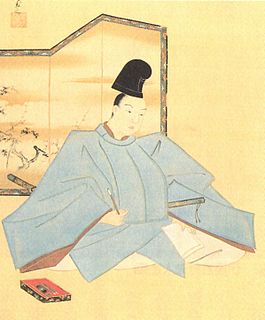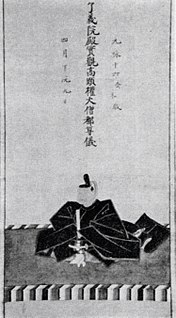History
In 1660, the daimyō (feudal lord) of the Sendai Domain, and clan head, Date Tsunamune was arrested in Edo, for drunkenness and debauchery. The charges are generally believed to have been true, but the arrest was probably encouraged heavily by certain vassals and kinsmen in the north. These vassals and kinsmen appealed to the Council of Elders in Edo that Tsunamune was not fit to rule, and that his son Date Tsunamura, great-grandson of Masamune, should become the daimyō. Thus, Tsunamura became daimyō, under the guardianship of his uncles, Date Munekatsu and Muneyoshi.

The daimyō were powerful Japanese feudal lords who, until their decline in the early Meiji period, ruled most of Japan from their vast, hereditary land holdings. In the term, dai (大) means "large", and myō stands for myōden(名田), meaning private land.

Sendai Domain was a Japanese domain of the Edo period. Most of its holdings were contiguous, covering all of present-day Miyagi Prefecture, small portions of southern Iwate Prefecture, and a portion of northeastern Fukushima Prefecture.

Date Tsunamune was an early Edo period Japanese samurai, and the 3rd daimyō of Sendai Domain in northern Japan from 1658 to 1660, and the 19th hereditary chieftain of the Date clan. Tsunamune’s succession and rule was soon opposed by a number of his kinsmen and vassals. This dispute eventually led to the Date Sōdō or "Date Disturbance" of 1671, which has been retold in theatre, and has become one of the more well-known tales of unrest and disunity among the daimyō of the Edo period.
Ten years of violence and conflict followed in the domain, reaching a climax in 1671 when Aki Muneshige, a powerful relative of the Date, complained to the shogunate of the mismanagement of the fief under Tsunamura and his uncles. The Metsuke (Inspector) for the region attempted to deal with the situation, and to act as a mediator, but was unsuccessful against Aki's determination.

The Tokugawa Shogunate, also known as the Tokugawa Bakufu (徳川幕府) and the Edo Bakufu (江戸幕府), was the last feudal Japanese military government, which existed between 1603 and 1867. The head of government was the shōgun, and each was a member of the Tokugawa clan. The Tokugawa shogunate ruled from Edo Castle and the years of the shogunate became known as the Edo period. This time is also called the Tokugawa period or pre-modern.
Metsuke (目付) were the censors or the inspectors of Tokugawa Japan. They were bakufu officials ranking somewhat lower than the bugyō. The metsuke were charged with the special duty of detecting and investigating instances of maladministration, corruption or disaffection anywhere in Japan; and particularly amongst the populace having status below the daimyō.
The Metsuke reported back to Edo, and Aki was soon summoned there to argue his case before various councils and officials, including the Tairō Sakai Tadakiyo and members of the Rōjū council. Following his arrival on the 13th day of the second lunar month, he met with and was interrogated and examined, as were several other retainers of the Date on both sides of the dispute. One retainer in particular, a supporter of Tsunamura and his uncles, by the name of Harada Kai Munesuke made a particularly poor impression in his meetings, and is said to have left the interrogation in a sour mood.
Tairō was a high-ranking official position in the Tokugawa shogunate government of Japan, roughly comparable to the office of prime minister. The tairō presided over the governing rōjū council in the event of an emergency. A tairō was nominated from among the fudai daimyōs, who worked closely with the Tokugawa traditionally. Generally, the office holder was the shogunate's chief policy maker, and provided Japan with a capable temporary leader in the absence of a shōgun, or in the event that the shōgun was incapacitated.
Sakai Tadakiyo, also known as Uta-no-kami, was a daimyō in Kōzuke Province, and a high-ranking government advisor and official in the Tokugawa shogunate of Japan.
The Rōjū (老中), usually translated as Elder, was one of the highest-ranking government posts under the Tokugawa shogunate of Edo period Japan. The term refers either to individual Elders, or to the Council of Elders as a whole; under the first two shōguns, there were only two Rōjū. The number was then increased to five, and later reduced to four. The Rōjū were appointed from the ranks of the fudai daimyōs with domains of between 25,000 and 50,000 koku.
Towards the end of the month, all the Date retainers involved were summoned to the Tairō's mansion for a further round of questioning. It is said that over the course of the day, Harada grew increasingly distressed as he realized the extent to which his answers clashed with those of Aki Muneshige. According to one version of events, Harada, following a series of questions, was waiting in another room when Aki came in and began to shout insults at him. Swords were then drawn, and Aki was killed. Harada was killed moments after, by the officials or their guards.
A trial was soon held, the murder being made a more severe crime for having been committed in the home of a high government official. The official verdict was that Harada drew first, and the punishment was severe. The Harada family was destroyed, Harada's sons and grandsons executed, and though Tsunamura was affirmed as the proper daimyō, his uncles were punished. Aki was judged to be a paragon of loyalty, and no action was taken against his family.
This story inspired a number of cultural productions, most notably the jōruri (puppet theater) play, later adopted into kabuki, Meiboku Sendai Hagi , by Chikamatsu. In this production, as in many other retellings of the tale, Harada is undoubtedly the villain, Aki the hero. Historians, however, are skeptical about the accuracy of this black-and-white approach, and claim that there were likely other elements to the narrative which are not clear from the formal records. One side or the other in the dispute may have bribed government officials in order to affect the government's handling of the situation, and it is known that Sakai Tadakiyo was a friend of Tsunamune, thus perhaps altering the shogunate's behavior in this matter further.

Bunraku (文楽), also known as Ningyō jōruri (人形浄瑠璃), is a form of traditional Japanese puppet theatre, founded in Osaka in the beginning of 17th century. Three kinds of performers take part in a bunraku performance: the Ningyōtsukai or Ningyōzukai (puppeteers), the Tayū (chanters), and shamisen musicians. Occasionally other instruments such as taiko drums will be used.

Kabuki (歌舞伎) is a classical Japanese dance-drama. Kabuki theatre is known for the stylization of its drama and for the elaborate make-up worn by some of its performers.










![Tachibana clan (samurai) [立花氏] samurai clan](https://upload.wikimedia.org/wikipedia/commons/thumb/b/b1/Gion_Mamori.svg/316px-Gion_Mamori.svg.png)



